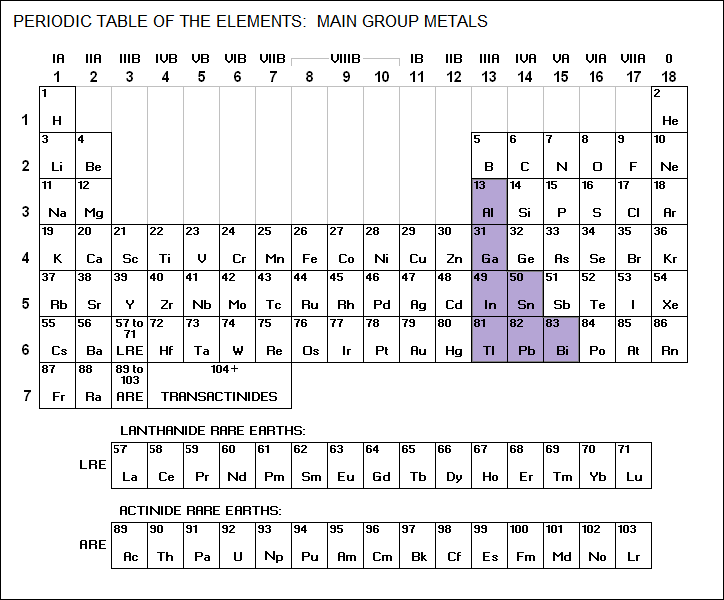
* Tin is a member of the main group metals family:

____________________________________________________________________
TIN / Sn / 50
Tin is normally a soft, ductile, silvery-white metal, but if kept at
temperatures below 13 C for an extended period of time, it will
slowly degrade from its solid "white tin" form to a "grey tin"
powder -- a process referred to as "tin disease". Its symbol Sn is
from the Latin name for the metal, "stannin". Ten isotopes of tin
are found in nature, more than for any other element:
Sn<120/50> / 32.6%
Sn<118/50> / 24%
Sn<116/50> / 14.5%
Sn<119/50> / 8.6%
Sn<117/50> / 7.7%
Sn<124/50> / 5.8%
Sn<122/50> / 4.6%
Sn<112/50> / 1%
Sn<114/50> / 0.6%
Sn<115/50> / 0.4%
All are stable.
atomic weight: 118.710
abundance: 49th
density: 7.31 gm/cc (white tin, a solid)
density: 5.75 gm/cc (grey tin, a powder)
melting point: 232 C
boiling point: 2,270 C
valence: 2 <4>
____________________________________________________________________
The "Sn++" ion was once referred to as "stannous" while the "Sn++++" ion was referred to as "stannic", but they are now known as "tin(II)" and "tin(IV)" respectively.
Tin is in fairly common use, being produced in hundreds of thousands of tonnes a year from the ore cassiterite, or "tinstone" (SnO2). Tin is mostly used as a plating metal, since it resists corrosion -- "tin cans" are steel with thin tin plating -- and as an alloying element, the most classic alloy being bronze, the most modern being titanium-tin alloy. It is also used in dyes and ceramic pigments.
